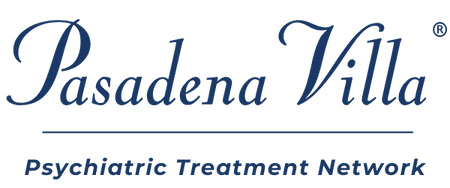Schizophrenia is a complex, commonly misunderstood neuropsychiatric disorder. Left untreated, it can cause a host of debilitating symptoms and create dangerous cycles of confusion, fear, and destruction for both the people experiencing the disorder and their loved ones. Medical experts are far from having all the answers about schizophrenia, but new research and improved science have sought to deepen our understanding of the condition in recent years.
One important recent change in our understanding of schizophrenia is the way the condition is classified and diagnosed by mental healthcare providers.
Before the 2013 release of the DSM-5 (Diagnostic and Statistical Manual of Mental Disorders, 5th Edition)—which houses the criteria used by doctors to make a diagnosis—schizophrenia was split into five distinct subtypes: paranoid, catatonic, residual, disorganized/hebephrenic, and undifferentiated. The DSM-5 eliminated these subtypes and replaced them with dimensions, or groupings, of symptoms. As a result of these changes in the DSM-5, mental health clinicians now view schizophrenia as part of a larger spectrum of mental illnesses that cause psychosis.
While the diagnostic criteria of schizophrenia have evolved, it can still be helpful to understand how we viewed the disorder in the past. This includes learning about previously recognized subtypes and exploring how the shift toward viewing schizophrenia as a spectrum disorder has changed the treatment landscape.
What is Schizophrenia?
Schizophrenia is a long-term mental health disorder that affects thinking, emotions, behavior, understanding, and social interactions. It can disrupt a person’s ability to think clearly, perceive the world accurately, and relate to and connect with others. The symptoms of schizophrenia can make it challenging for individuals to attend school, hold down a job, or form fulfilling relationships.
An estimated 24 million people in the world—that’s 0.32% of the population—live with schizophrenia. People are most often diagnosed with schizophrenia between ages 16 and 30, typically following their first episode of psychosis. Onset usually occurs earlier among men than women, but it is equally common among all genders.
Symptoms of schizophrenia are grouped into three main categories: psychotic, negative, and cognitive.
Psychosis—a collection of symptoms that cause a person to lose contact with reality—is a hallmark of schizophrenia. Psychotic symptoms include:
- Hallucinations (hearing voices, seeing or feeling things that are not there)
- Delusions (unshakeable beliefs that persist even when they’re disproven by evidence)
- Disordered thinking (incoherent, jumbled, or illogical thinking and speech)
Negative symptoms involve loss of motivation, lack of interest or pleasure in activities, withdrawal from family and friends, difficulty expressing emotions, and challenges with daily functioning.
Examples include:
- Neglecting household chores, personal hygiene, or daily tasks
- Avoiding social interaction, e.g., refusing to see or speak to family and friends
- Speaking slowly, using very few words, and providing poorly organized or incomplete information when speaking
- Speaking in a monotone voice and using little or no expression when communicating, even when appropriate
Cognitive symptoms include troubles with memory, attention, and concentration. Examples include:
- Struggling to follow a conversation, retain new information, or remember important appointments or tasks
- Difficulty processing information
- Difficulty making decisions
- Trouble staying focused
Diagnosing Schizophrenia: Previously Used Subtypes
The DSM-5 no longer recognizes the distinct types of schizophrenia listed in the DSM-IV. However, learning the previously recognized subtypes may help individuals and their loved ones better understand the symptoms of the condition.
Five subtypes of schizophrenia were previously recognized in the DSM-IV:
Paranoid
Paranoid schizophrenia was one of the most common types of schizophrenia; it was characterized by intense persecutory delusions (believing your loved ones are conspiring against you or your doctors are trying to harm you, for instance). Today, paranoia is considered a symptom of schizophrenia, but it is no longer recognized as a distinct diagnosis.
Catatonic
Catatonic schizophrenia was used to describe individuals who exhibited abnormal motor movements and behaviors.
Examples include:
- Sitting completely still, staring, and/or not speaking for hours
- Repetitive, pointless movements (rocking, twitching, tapping)
- Involuntary parroting (imitation) of another person’s movements or speech
- Sluggishness in movements or reactions
Disorganized/Hebephrenic
Hebephrenic schizophrenia, also called disorganized schizophrenia, was used to describe people with schizophrenia who experienced disorganized behavior and speech but had no hallucinations or delusions.
Symptoms of disorganized schizophrenia included:
- Flat affect (monotone, expressionless speech)
- Speech disturbances
- Disorganized thinking
- Trouble with daily activities
- Inappropriate emotions or facial expressions
Residual
Residual schizophrenia was the most complex type of schizophrenia. It described individuals who once had diagnosable schizophrenia but had stopped experiencing the distinct, prominent symptoms of the disorder.
Symptoms of residual schizophrenia included:
- Flattened affect
- Slowed speech
- Psychomotor difficulties
- Poor hygiene
Undifferentiated
Undifferentiated schizophrenia was used to describe people who had symptoms of psychosis but did not meet the diagnostic criteria for a specific subtype of schizophrenia.
Schizophrenia Spectrum Disorder
Today, researchers recognize schizophrenia as part of a larger group of mental illnesses known as schizophrenia spectrum disorders (SSDs). Because schizophrenia is such a complex condition, its symptoms are highly variable from person to person; they also change throughout a person’s life.
By recognizing schizophrenia as a spectrum disorder, clinicians can diagnose and treat individuals based on the severity and nature of their symptoms, rather than the specific type of schizophrenia they’ve been diagnosed with.
Schizophrenia Treatment
Currently, the most effective treatment for schizophrenia spectrum disorders is a combination of medication and psychotherapy. Medications known as antipsychotics are used to manage the symptoms of psychosis, while various psychotherapies can help people with schizophrenia manage the psychological, behavioral, and social aspects of the disorder.
The most common psychotherapies used in the treatment of schizophrenia include cognitive behavioral therapy (CBT), cognitive enhancement therapy (also called cognitive remediation therapy), family therapy, social skills training, and individual psychotherapy.
With the right combination of treatments and social support, people with schizophrenia spectrum disorders can live healthy, fulfilling, and independent lives.
At Pasadena Villa, we provide treatment for schizophrenia in therapeutic environments that promote medication regulation, physical and mental well-being, life skills development, and personal motivation.
We provide a full continuum of care for schizophrenia and related disorders, including residential treatment, partial hospitalization programs, intensive outpatient programs, and general outpatient treatment. Our different levels of care allow clients to step down the intensity and structure of their treatment as they build awareness, develop new skills, and gain independence.
References
- American Psychiatric Association. (2024). What is Schizophrenia?.
- National Institute of Mental Health. (2024). Schizophrenia.
- World Health Organization. (2022). Schizophrenia.
- Schizophrenia Bulletin. (1991). Classical Subtypes for Schizophrenia: Literature Review for DSM-IV

